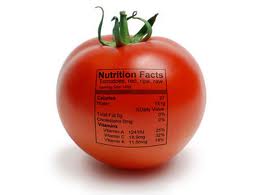Posts Tagged ‘sugar’
Monday, December 10th, 2012
It’s the Christmas party season again! How can we avoid putting on extra weight while having a great time? The following are some holiday eating tips to help you do just that so that you can still look good and be healthy in January.
- Don’t go to a party hungry. We often eat faster and more when we are hungry – therefore eat a wholesome breakfast and lunch on the day to avoid overeating at the party.
- Watch your portion. Treat yourself a nice drink, dessert, chocolate or sweets without guilt, but always watch your portion. Go for small portions. This way you can sample all the different foods. Moderation is always the key.
- Make a conscious choice to limit high fat items. High fat food items can be found in fried food, cream-based soup, cheese-filled casseroles, pies, processed meats such as salami and sausages, some pastries and baked goods.
- Try other versions of alcohol. Instead of beer, cider, creamy liqueurs try dry wine or spirits with diet mixer, which have fewer calories.

- Drink plenty of water. Alcohol and coffee can dehydrate your body.
- Physical activity. Take nice brisk walks with your loved ones and enjoy their company in the holiday season.
Tags: activity, alcohol, calories, carlow, christmas, diet, fat, healthy eating, kilkenny, nutrition, party, portion, snack, sugar, winter
Posted in General | Comments Off
Monday, May 21st, 2012
Takeaways are often cheap, convenient and satisfying but, unfortunately, they are not always very healthy. Here are some tips on foods to avoid and healthier options when ordering your favourite takeaway.
Fish and chips
- Try to avoid: thin-cut chips, pies such as cheese and onion pie or steak and kidney pie, jumbo sausage.
- Healthier options: fish coated in breadcrumbs, mushy peas, thicker-cut chips without salt.
Italian
- Try to avoid: large deep-pan pizzas, pizzas with the crust stuffed with cheese, triple cheese with pepperoni pizzas, creamy pasta sauces, garlic bread.
- Healthier options: small or medium pizza with a thin base and vegetable or lean meat topping, tomato-based pasta sauces, bruschetta.
Chinese
- Try to avoid: sweet and sour battered pork balls with special or egg fried rice, prawn toast, spring rolls.
- Healthier options: crab and corn soup, steamed dumplings, steamed vegetables and plain boiled rice, steamed fish, chicken chop suey, Szechuan prawns.
Thai
- Try to avoid: fried rice, fish cakes, spring rolls, prawn crackers, satay skewers with peanut sauce and sweet and sour dishes.
- Healthier options: clear soups such as tom yum, salads, stir-fried meat, fish or vegetable dishes, steamed seafood dishes, such as fish or mussels.
Indian
- Try to avoid: any creamy curries such as korma, passanda or masala with pilau rice, naan, bhajis, pakoras and poppadoms.
- Healthier options: tandoori or madras with chicken, prawns or vegetables, plain rice and chapatti.
Kebab and burgers
- Try to avoid: large doner kebab with mayonnaise and no salad, burgers with cheese and mayonnaise, thin-cut chips, chicken or fish patties deep fried in batter.
- Healthier options: shish kebab with pitta bread and salad, grilled burgers made from lean fish or meat (beef or whole chicken breast) and without cheese and mayonnaise.
Tags: calories, carlow, diet, fat, kilkenny, lose weight, nutrition, nutritional concepts, saturated fat, sugar, takeaway
Posted in General | Comments Off
Monday, May 7th, 2012
Today more and more of us are becoming aware of how important what we eat is to our health and well-being. There’s lots of information about the value of healthy eating but it’s often difficult to work out how much of everything we should be eating as part of a healthy diet. This is especially true of food labelling – all the facts and figures can be very confusing and sometimes hard to understand.
In this blog Sabrina will help you to decide what would be considered a low or high amount of sugar and fat? Also, when looking at food labels what do you need to focus on – do you look at the ‘per serving’ or ‘per 100g’? So here’s the general rule thumb when looking at a food label.
Firstly, do you use ‘per serving’ or ‘per 100g’?
As a guide use the serving size when that is the amount you are going to have for the whole day, for instance, a ready meal, if it’s something you are likely to have in smaller amounts throughout the day, for instance, snacks look at the per 100g.
As for if is it healthy or not…
Sugar: Try to keep sugar intake low.
15g is high.
5g is low.
Fat: Ideally you want to keep fat intake low.
20g is high.
3g is low.
Be warned – when reading food labels there is a difference between carbohydrate and sugar. A high carbohydrate value is fine as long as the ‘amount as sugars’ value is low.
Tags: carlow, fat, food label, healthy eating, kilkenny, nutrition, nutritional concepts, saturated fat, sugar
Posted in General | Comments Off
Monday, April 9th, 2012
So it’s Easter time again! As I researched the content for this blog I came across this article on the Daily Mail website and decided to share it with you all. It’s definitely an interesting read. I hope this helps to keep you all on the right track. Enjoy!
http://www.dailymail.co.uk/health/article-382232/Easter-Eggstravaganza-Surviving-Easter-diet.html
Tags: activity, calories, carlow, diet, easter, energy, fat, food label, healthy eating, kilkenny, lose weight, nutritional concepts, saturated fat, sugar
Posted in General | Comments Off
Monday, February 13th, 2012
Valentine’s Day might mean that there is a chance you’ll be eating out. However, eating out usually means that we have little control over how the food is prepared or how large the portion is. Unlike packaged food, foods bought from cafes, restaurants etc. don’t have to carry nutritional information and so opting for the healthiest option might not always be easy. However, with these helpful tips eating out on Valentine’s Day can be both enjoyable and healthy!
General tips
- Never arrive at a restaurant hungry!
- Think ahead, if you know you’re eating out later, choose wisely earlier in the day to keep calories, fat, sugar and salt intakes under control.
- Leave a little time for your food to digest before you order a dessert. Give your stomach time to send signals to your brain you are full (approx 20 minutes). If you still want a dessert, consider splitting it with one of your friends. Opt for sorbets, or fruit dishes to balance out a heavy main course.
- Speak up about how you’d like a dish prepared e.g. ask for no mayonnaise.
- You’re more likely to overeat at an ‘all you can eat’ style buffet.
- Choose side orders of salad or vegetables to fill up on.
- Cut off any visible fat from meat to keep saturated fat intake down.
- Look out for smaller portions i.e. a main meal option as a starter size.
- Opt for dishes which are grilled, baked, steamed, poached rather than fried.
- Check the menu for dressings on salads and ask for it to be on the side. An otherwise healthy and nutritious salad could be drowned in a high fat sauce, bumping up its calorie content.
- Avoid cheese, cream or butter-based sauces
Tags: calories, carlow, diet, eating out, fat, healthy eating, kilkenny, low fat, nutrition, nutritional concepts, portion, saturated fat, sugar, Valentine's Day, vegetables
Posted in General | Comments Off
Monday, July 4th, 2011
The best way to eat if you want to banish tiredness is to have a healthy, balanced diet that contains foods from four main food groups in the right proportions.
The four food groups are:
- potatoes, bread, rice, pasta and other starchy foods
- fruit and vegetables
- milk and dairy foods
- meat, fish, eggs, beans and other non-dairy sources of protein

- Eat at regular intervals.
- Start the day well with breakfast.
- Aim for 5 a day with fruit and vegetables.
- Say no to sugar.
- Watch your intake of alcohol.
- Eat enough for your activity level.
Tags: 5 a day, activity, alcohol, calories, carlow, diet, energy, fruit, healthy eating, kilkenny, nutrition, nutritional concepts, sugar, vegetables
Posted in General | Comments Off
Monday, November 15th, 2010
Breakfast means “breaking the fast”. After a nights rest, eating gives you energy to spark the body into life again.
Breakfast also cuts down on mid morning ‘snack attacks’.
No time for breakfast?
- Set the alarm 5 minutes earlier.
- Make the sandwich the night before, pop it in the fridge, and eat it when you get to school / work with a carton of orange juice.
- A glass of milk and a banana are very quick and easy to eat.
- Fruit can be eaten on the way to school / work. Try bananas, apples, pears, peaches, etc.
Cereal and Milk
- Healthy choices – Shredded Wheat, Weetabix, Shreddies, Puffed Wheat, Fruit ‘n’ fibre, Porridge, Ready Brek, Rice Krispies, Cornflakes.
- Try not to add sugar, have sliced banana or sprinkle raisins instead. If you can’t do without, sprinkle less sugar or try an artificial sweetener instead.
- Sugar coated cereals may damage your teeth, so have these only as an occasional treat.
Toast, bread or muffins
- Choose wholegrain, high fibre white or malted grain varieties.
- Try peanut butter, sliced banana or just a thin scrape of jam or marmalade.
- Easy to eat on the move or on the way to school / work.
- Use only a thin scraping of butter, margarine or a low fat spread.
Cooked breakfast
- Can be healthy, but choose wisely.
- Try grilled tomatoes and mushrooms or baked beans on toast.
- Don’t fry your breakfast – try grilling bacon or low fat sausages and scrambling the egg.
Tags: breakfast, carlow, energy, fruit, healthy eating, kilkenny, nutrition, nutritional concepts, portion, snack, sugar
Posted in General | Comments Off








